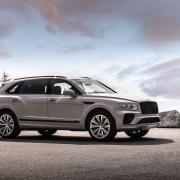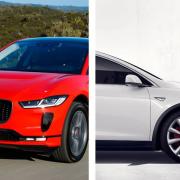FEW cars demonstrate just how rapidly the car industry moves more clearly than the BMW X5. When it first appeared in 1999, it would be no exaggeration to say that it completely revolutionised the market for big 4x4s.
FEW cars demonstrate just how rapidly the car industry moves more clearly than the BMW X5. When it first appeared in 1999, it would be no exaggeration to say that it completely revolutionised the market for big 4x4s.
Think of the sector pre-X5 and post X5, it really was that much of a landmark vehicle. Before the BMW appeared, 4x4s were mainly big, slow and agricultural.
Other manufacturers were just beginning to see that it was possible to build in a little refinement and elegance but when the X5 first appeared in 1999, it changed everybody's perception.
Within four years, however, it had gone from the head of the bunch with no foreseeable rivals to lower middle order. Something needed to be done. Something has and you're looking at it right here in the shape of the all-new X5.
Clues as to the direction this vehicle would take appeared in 2004 with the launch of the BMW X3. Many potential customers groused that the X3 was almost as expensive as the X5 and couldn't see the point of the smaller car but plans for the replacement X5 were already well in hand, with the aim of pitching a much bigger car a good deal further upmarket in order to compete against the likes of the Range Rover, the Porsche Cayenne and the Volkswagen Touareg on an equal footing.
Now it all makes a good deal more sense.
In the years since the X5 first appeared, much has progressed in the science of packaging a car within a given wheelbase. This much was evident when BMW let slip the fact that the X3 was actually bigger than the old X5 inside and the latest X5 is supersized compared to its predecessor.
Let's have a look at the pertinent facts.
This X5 is only 19cm longer than the old model but manages to incorporate up to three rows of seats. Even with all three rows occupied, there's still 200 litres of boot space. In a more conventional five-seat configuration, the X5's boot measures 620-litres, up 155 litres on its predecessor.
There's also an additional 90-litre storage compartment under the floor if you're not interested in having seven seat capacity and BMW reckons that only around 10 to 15 per cent of buyers will opt for the extra seats.
This X5 is also 6cm wider than its forebear but, in another case of the engineers pulling a rabbit out of their hat, weighs no more in base specification.
The styling of the car is a good deal more conservative than many contemporary BMWs with little of the ostentatious 'flamesurfacing' seen on models such as the 5 Series and Z4.
Instead, BMW has adopted a more restrained look and feel that lifts the best aspects of modern BMW design language and fuses them together in a broadly harmonious fashion. The dashboard features the same 'wing' design as many BMW saloons while the stance of the car is much like a supersized and rather chunkier X3.
It's a very deft piece of styling that, in common with its predecessor, manages to disguise its bulk superbly.
One thing that BMW is keen not to alter is the X5's reputation as being the best driver's car in its class. When the model first appeared, the German company invented a new classification for it, steering away from the lumbering Sports Utility Vehicles and dubbing the X5 a Sports Activity Vehicle, marketing doublespeak for the fact that this car was aimed at on-road performance rather than off-road ruggedness.
The BMW started out great and became merely very good. The latest vehicle may never reclaim the dominant market share its predecessor once enjoyed, but BMW will once again have the hardware to put upstarts like Volvo and Volkswagen firmly in their place and duke it out on a level playing field with the likes of Audi and Mercedes.
This looks like a welcome return to form.


























